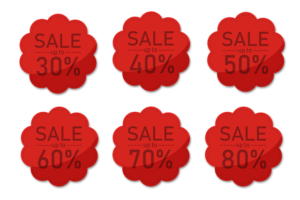 Your first thought when it comes to using psychology to increase sales and revenue might be of painting the roses red, so to speak. The human brain is attracted to certain colors more than others, and this could be used as a means to bring in business and drive sales.
Your first thought when it comes to using psychology to increase sales and revenue might be of painting the roses red, so to speak. The human brain is attracted to certain colors more than others, and this could be used as a means to bring in business and drive sales.
There’s an easier way to sell any product, regardless of color, shape, size, or even what the product is. With psychological pricing, you have the opportunity to make any and every product a little more attractive immediately.
Of course, you still have to bring in customers, and you must know what you’re doing if you want the numbers to work for you. What is psychological pricing and how can you use it in your retail operation to increase revenue?
What is Psychological Pricing?
Pricing merchandise is not a matter of whim. It starts with knowing the costs that go into a getting a product from conception into the hands of a buyer. This could include development, manufacturing, transportation, and marketing. It includes the cost of every man hour of labor and material costs, even those not directly linked to creating or selling the product itself.
Pricing involves complex calculations of the costs, but it’s also a relationship between what you want to earn for your efforts and what the customer is willing to pay for goods. You can spend millions developing a revolutionary toothbrush, but no one is going to spend a million dollars on one, or at least, your target consumer group may be very selective.
That said, you don’t have to sell five toothbrushes for a million dollars each. You could sell five million for a dollar. The point is that pricing is anything but arbitrary, and this is where psychological pricing enters the picture. It has to do with seeing the greatest possible return while making consumers believe they’re getting the best deal.
How is this done? Often, by simply rounding down. When you price an item at $19.99, you’re getting just shy of $20, but consumers don’t feel like they’re paying $20, they feel like they’re paying $19 (or less). True, you’d rather have the full $20, but all of $19.99 is better than none of $20.
When customers feel like they’re paying less, they could be more inclined to buy or they may pay more than they normally would because of the illusion of a deal. Pricing using certain numbers can also signal a sale, which infers even greater value to buyers and more impetus to spend, thus increasing sales and revenue.
Using It Correctly
Value is a somewhat subjective proposition. What you think a product is worth isn’t always what consumers are willing to pay, and there are endless tomes on the subject of convincing buyers of value. When it comes to psychological pricing, there are several tricks to employ. Rounding down is easily the most common in the retail setting.
You can also use strategies like buy one, get one free (BOGO) sales and comparative pricing, where you put similar goods side by side and price one higher and one lower. Depending on how you do it, you could drive buyers toward the bargain-priced item (to move inventory) or encourage them to purchase the higher-priced “higher-quality” item. With the right psychological pricing strategies, you have the opportunity to increase sales and revenue.
If you are interested in purchasing Pricing guns and labels, Price signs and Posters, shop our website, Specialty Store Services. We have everything you need. If you have a question that you would like answered immediately, you can Live Chat, or phone us at 800-999-0771.
